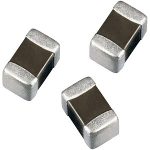
Introduction
Ever wondered what that little resistor next to an LED (Light Emitting Diode) is for? These resistors play a vital role in ensuring your LEDs function properly and last a long time. But how to find the value of these resistors? That’s where LED resistor calculators come into play––handy tools that help calculate the precise resistor value needed when setting up an LED circuit. Understanding these valuable tools can ensure the LED operates safely and efficiently for years to come. This article outlines the wonders of LED resistor calculators, exploring their significance, types, and applications, making your next project a breeze.
Understanding LED Resistors and LED Resistor Calculators
LED resistors are resistors specifically used in circuits with LEDs. They are crucial components because LEDs, unlike regular light bulbs, simply don’t need voltage to light up. They require a specific current to function correctly. The main function of an LED resistor is to limit the current that flows through the LED. Without a resistor, too much current could flow through the LED, burning it out. In essence, the resistor acts like a guard, regulating the current to a safe level for the LED.
LED resistor calculators, also called LED resistor value calculators, are online tools designed to determine the value of a resistor you need to include in your LED circuit. These calculators typically require you to input the supply voltage of your power source, the LED forward voltage, and the desired LED current flowing through the LED. Once you enter this information, the calculator will recommend a resistor value that limits the current to the desired level.
Why Use an LED Resistor Calculator?
LEDs have a specific current they can handle safely. Exceeding this current, even for a short moment, can damage the LED. A resistor typically placed in series with an LED limits the current flowing through it, protecting the LED from harm. While you can calculate the resistor value yourself using Ohm’s Law, LED resistor calculators offer a quick and convenient way to determine the right resistor for your project, saving time and effort.
What to Know Before Using an LED Resistor Calculator?
There are a few key pieces of information you’ll need to use an LED resistor calculator effectively:
- Supply Voltage: This is the voltage coming from your power source (battery, power adapter, etc.).
- LED Forward Voltage: This is the voltage drop across the LED itself, which varies depending on the LED colour. Typical values range from around 1.8V for red LEDs to 3.3V for blue LEDs.
- Desired LED Current: This is the amount of current you want to run through the LED. Common operating currents for small LEDs are in the 10-30 milliamp (mA) range. If you are unsure, a safe bet is to start with 20mA.
Using the LED Resistor Calculator
Once you have basic information, input the values into the calculator. Most calculators will then provide you with:
- Resistor Value: This is the recommended resistance value for your specific LED and circuit.
- Power Dissipation: This tells you how much power the resistor will be consuming. It’s important to choose a resistor with a power rating high enough to handle this dissipation without overheating.
What are the Types of LED Resistor Calculators?
LED resistor value calculators come in the following main types:
- Series LED or LED Series Resistor Calculator – This type of LED calculator is used for circuits with a single LED or multiple LEDs connected in series.
- Parallel LED Resistor Calculator – This type of calculator is used for circuits with multiple LEDs connected in parallel.
- LED Array Calculator – This type of calculator is designed for more complex circuits with parallel or a combination of series and parallel LED connections. It might ask for additional information, such as the number of LEDs in the array.
In addition to the above types, LED driver calculators are available designed to determine the right LED driver for your projects.
Finding an LED Resistor Calculator: Exploring Its Critical Usage Considerations
There are many free online LED resistor calculators available. A quick web search for “LED resistor calculator” will bring up several options. Smartphone apps provide a portable option for calculating resistor values on the go, useful for field work and quick checks. Additionally, some electronics design software includes built-in tools for LED resistor calculations as part of its suite of features.
When using an LED resistor calculator, follow the given tips to simplify your process:
- Pay Attention to the Type of LED Circuit: Some calculators are designed for single LEDs in series, while others can handle multiple LEDs in series or parallel configurations.
- Double-Check Your Values: Before finalising your circuit, make sure you have entered the correct values into the calculator.
- Consider Using a Slightly Higher Resistor Value: This can help provide a bit more safety margin and prevent the LED from running too bright.
Real-World Applications of LED Resistor Calculators
LED resistor calculators are handy tools for anyone working with LEDs in electronic circuits. They are widely used in electronics projects, consumer electronics, automotive applications, and commercial signage that involve LEDs. Some typical applications of these calculators include:
- Breadboard Circuits: When experimenting with LEDs on a breadboard, these calculators help you choose the appropriate resistor to prevent burning out the LED while allowing it to light up properly.
- Prototyping: These calculators are essential in prototyping electronic devices that include LEDs to ensure the design is functional and efficient before final production.
- Replacing Burnt-Out LEDs: If an LED in your project has burnt out, you can use the calculator to determine the correct resistor value for the replacement LED.
- Understanding Basic Electronics: The concept behind LED resistor calculators is based on Ohm’s Law, a fundamental principle in electronics. Using these calculators can help you grasp this law and its application in electronic circuits.
- Educational Purposes: Students learning about electronics can use calculators to understand the relationship between voltage, current, and resistance in LED circuits.
- DIY Electronic Projects: Many DIY projects incorporate LEDs. These calculators are helpful in designing circuits with LEDs, ensuring they function correctly and safely.
Final Thoughts
LED resistor calculators are handy tools for anyone working with LEDs in their circuits, ensuring they choose the right resistor while protecting their LEDs from damage. Using these calculators eliminates the need for manual calculations, ensures optimal brightness and longevity of LEDs, and saves time and effort. By providing quick and accurate calculations, it supports a myriad of applications, from simple DIY projects to complex industrial designs, ensuring the LEDs operate within safe parameters and achieve optimal performance.





















